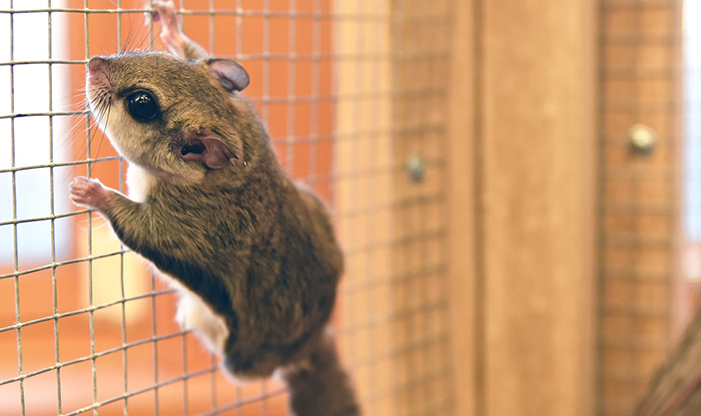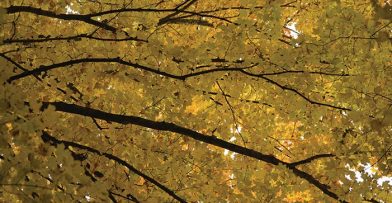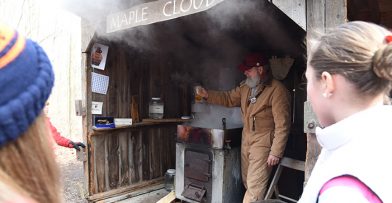Flying squirrels are native to this area, but because they are so elusive, people don’t get a chance to see or learn about them. Even though they are found in the wild at the Center, there’s a chance you’ve never seen one. Therefore, we thought a Flying Squirrel would be a welcome addition to our animal ambassadors, and in 2016 Amelia came to the Center. She is named after Amelia Earhart, the great female aviator.
At Home with Amelia
Amelia lives in a large enclosure at the Center’s Great Hall. Amelia likes to be social and play when she is awake, though she is still somewhat cautious. She’s relatively quiet during the day, but receives regular visits from her caregiver Cassie Rincon, other staff, and volunteers. When being visited, Amelia spends time eating nuts from the hands of her caregiver, dashing about in her enclosure, and playing inside of and running through her favorite home amenity – cardboard tubes of varying sizes. She likes to be social for about an hour on a day’s she is not in a program. Afterwards, she is content to go back to resting. She spends the daytime sleeping in her nest, which Amelia stuffs with fluffy material to make her warm.
Oftentimes Amelia comes out to romp around in her enclosure in the evening. Cassie will sometimes put out a large shelled nut on the floor of the enclosure and record Amelia with a nighttime camera to see how she behaves with it. Amelia likes new forms of stimulation, so her enclosure receives updates to its internal layout to keep her interested.
Since Amelia and all Flying Squirrels are nocturnal, they are sensitive to light. During programs, you will see Amelia in a darkened room lit by red light. We use red light to view them because it will not disturb her naturally large, sensitive eyes. Red light has a longer wavelength and enhances our night vision, so it also helps us to see her in the dark. Recently, an interesting phenomenon has been discovered when Flying Squirrels encounter ultra-violet light; their underside glows pink!
The Elusive Flying Squirrels
Flying Squirrels are a rare sight in the wild even though they are native to Wisconsin. The normal range for a flying squirrel includes Wisconsin, the Midwest, the Eastern half of the US, parts of eastern Canada, and parts of Mexico. The exciting news is we have documented Flying Squirrels in the wild at the Center, so we know they are here.
They live in forested areas and nest in cavities and dreys, which they build out of twigs, dry leaves, and grass in the corners of tree branches. Flying Squirrels have multiple nests for different purposes. There can be separate ones for resting, avoiding predators, raising young, and some to have a food cache. Despite the reputation of rodents being dirty, Flying Squirrels keep their nests tidy. They have many natural predators, including Great Horned Owls, foxes, and weasels.
Do Flying Squirrels Fly?
Almost, but not exactly—Flying Squirrels glide. They can glide up to 150 feet! This works because of a flap of skin called a patagium, which extends from their wrist to their ankle. It helps them to steer and brake while gliding. They use their tail for balance, and they triangulate for direction. You can see them triangulate by noticing the bobbing of their head and the shifting of their weight from side to side while gliding. Flying Squirrels can even make a 90-degree turn in mid-air.


